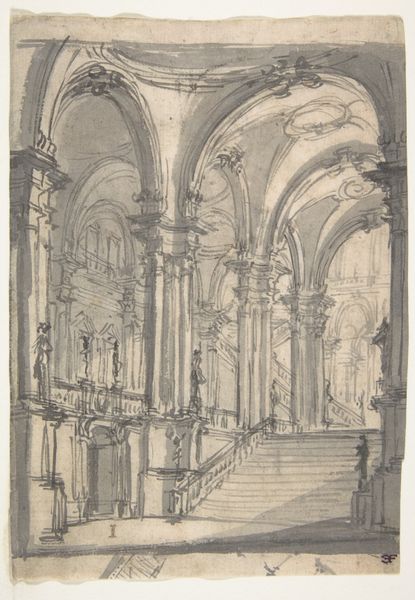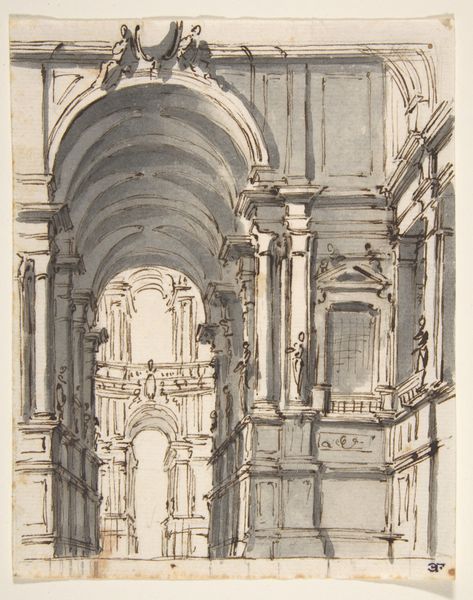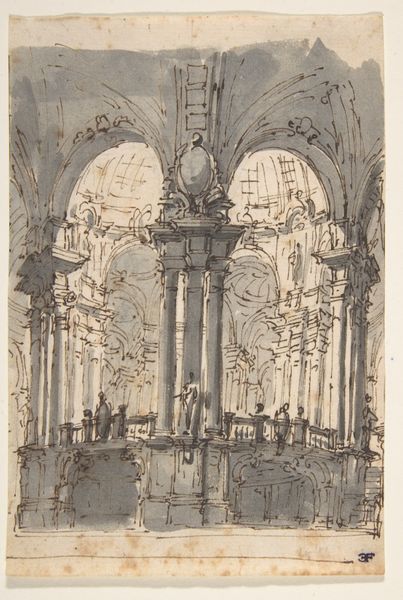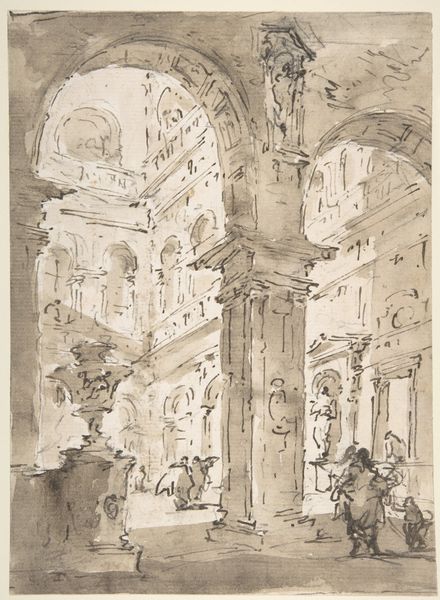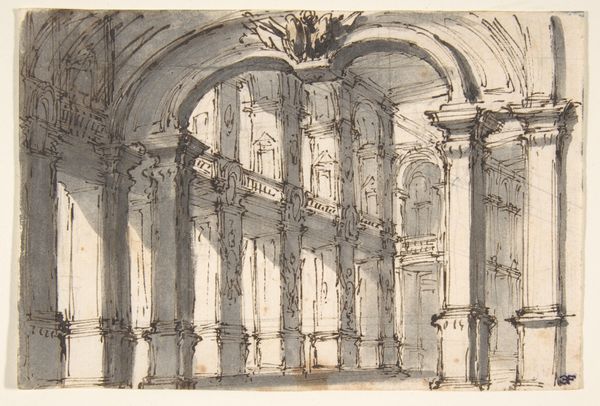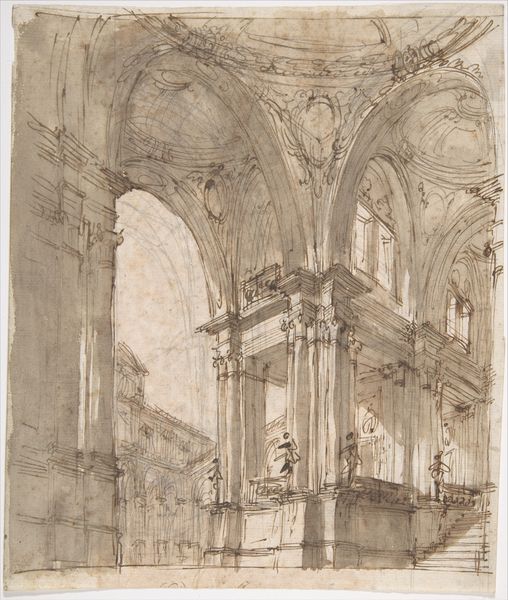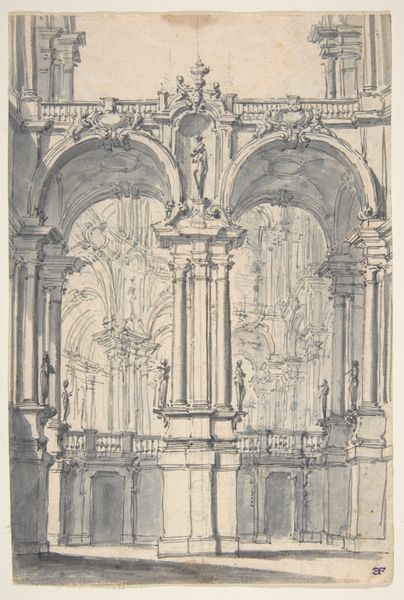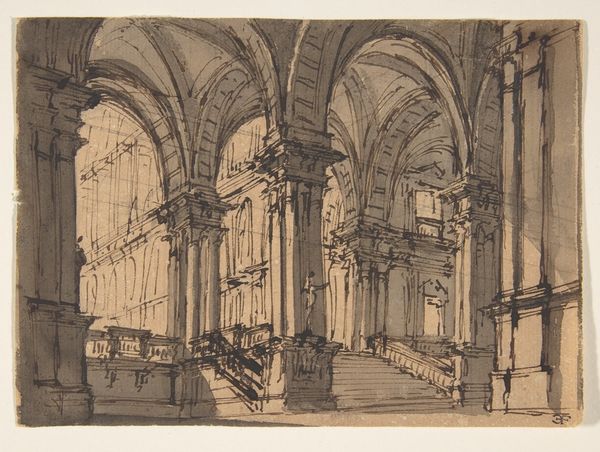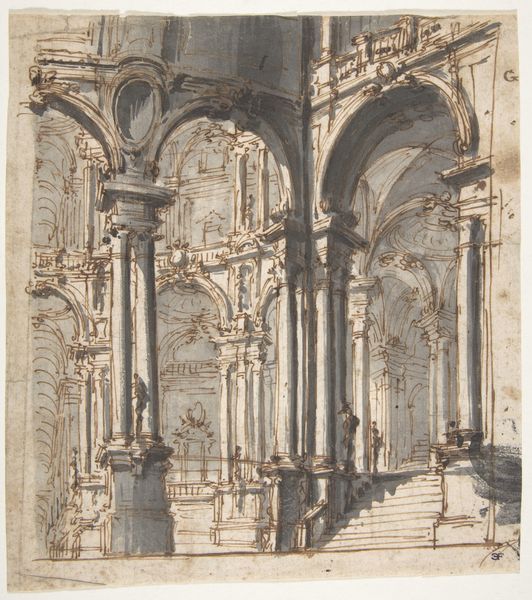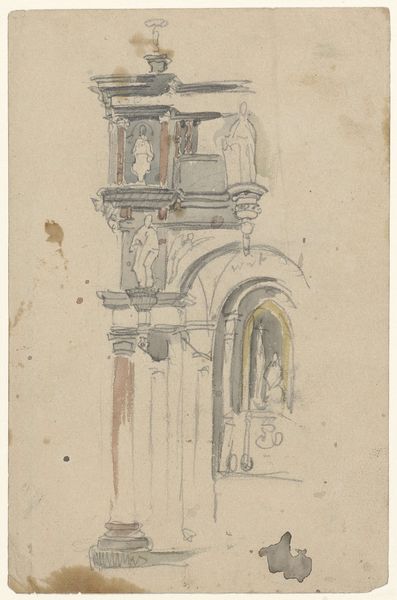
Design for Stage Set with a Circular Arcade (recto); Sketch for Stage Set with Circular Arcade (verso) 1698 - 1765
0:00
0:00
drawing, ink, architecture
#
drawing
#
ink drawing
#
baroque
#
pen sketch
#
form
#
ink
#
geometric
#
column
#
arch
#
line
#
architecture
Dimensions: sheet: 4 5/16 x 3 1/16 in. (10.9 x 7.8 cm)
Copyright: Public Domain
Curator: This ink drawing is called “Design for Stage Set with a Circular Arcade (recto); Sketch for Stage Set with Circular Arcade (verso)", and it comes to us from Giovanni Battista Natali III, likely sometime between 1698 and 1765. What are your initial thoughts? Editor: It evokes such a sense of grandiose theatricality even in this limited palette. I'm immediately drawn to the architecture; the stark, bold lines contrast beautifully with the airy washes of ink. There's such rhythm. Curator: Indeed, the arcade’s geometry, composed of repeating arches and supporting columns, invites semiotic interpretations of power. We see a clear representation of linear perspective and spatial depth, which establishes an explicit system of symbols, positioning the viewer in a subordinate position. Editor: Ah, and stage design during this period often served as vehicles for expressing civic pride, particularly in Venice, I think we should keep in mind the rise of public opera houses during this time and how scenery shaped popular understandings of social hierarchy. Was Natali active in theatrical productions? Curator: There's certainly evidence supporting that. One notices, the meticulous rendering of each arch, its deliberate repetition suggesting modularity, reflecting and celebrating uniformity. Editor: Do you think that this image, and its duplication in reality, acted as propaganda for the powerful families within Venice, the state, and the Church, maybe? After all, dramatic designs were the media of the era, yes? Curator: Undeniably, but from my perspective, these architectural drawings explore the properties of form. They represent symmetry and regularity through structure; each design presents different aesthetic strategies but follows immutable formal principles. Editor: Absolutely, but formal choices are never completely divorced from historical context. The fact that it depicts a theatrical space is, in itself, highly suggestive. As this sketch has been saved in the Met’s collection, its historical meaning and formal analysis will always depend on cultural factors related to social, economic and art history! Curator: Of course, but that still requires the artwork. These compositions stimulate the viewer to explore form through art. The work facilitates, inspires, and enlivens artistic reflection. Editor: I suppose, taken together, then, we find this drawing functioning simultaneously as a theatrical spectacle, and a space for contemplation of artistic and architectural principle.
Comments
No comments
Be the first to comment and join the conversation on the ultimate creative platform.
